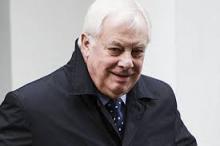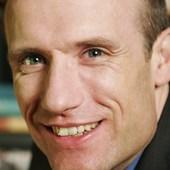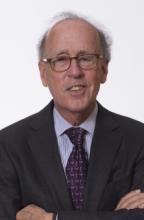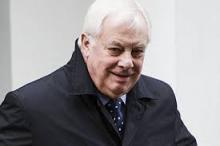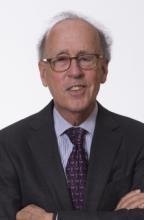How Pictures Comes to Life
Concert bookers around the world are lining up pianists and conductors for performances of Pictures at an Exhibition next year, the 140th anniversary of one of the most frequently performed, distorted, and some say “butchered” masterpieces of 19th-century Russian music. And yet it is sure to be a celebration of what the late pianist Sviatoslav Richter called the “best Russian work for piano, amen.” At least, he might have added, when performed as Modest Mussorgsky wrote it. Lesser performers and composers have never ceased tinkering with it, much to the detriment of the inspired original.
A suite of ten short pieces linked by a recurring “promenade,” Pictures renders in musical language a ramble through an art exhibit in Tsarist St. Petersburg. No piano writing of its period quite measures up to it for its oh-so-Russian sonorities, harmonies, and jolting changes of mood. Among the hundreds of recordings available, Richter’s 1958 recital in Sofia, Bulgaria, is regarded as the gold standard. “Here the piece has incredible pianistic color,” William Grant Naboré, director of the International Piano Academy on Lake Como, Italy, tells me. “It has Russian soul, yes, but it also looks beyond Russia.” The Richter performance is still a favorite of music-lovers:
Mussorgsky’s creative storm for Pictures was almost frightening in its intensity. Musical ideas from his viewing of the artwork flooded his mind over twenty days as he struggled to structure what he was hearing in his head. “I can hardly manage to scribble it down on paper fast enough,” he wrote in mid-composition; “I think it is working.”
As with most great classical compositions, the impression of Pictures on the listener deepens and broadens upon second and third hearings. Details emerge and images come to life as the music evokes bells, children on a playground, women quarreling at an open market, two Jews in conversation and a peasant singing as he drives a rumbling wooden cart, among other scenes. Audiences love it for its charm and easy accessibility. “Pictures is a truly Russian work in its directness of expression, its form arising from content, and its summing of parts rather than organic growth,” wrote British music academic Michael Russ in an extended monograph on the piece. “Mussorgsky prefers to depict real life rather than the spiritual, romantic, sensuous or erotic.”
The piece becomes more poignant when you consider its genesis: Mussorgsky wrote it shortly after his friend, the architect-artist Viktor Hartmann, had died at the age of 39 from sudden heart failure. The two men had found common ground over their views on the arts in Russia and were on a sort of crusade against excessive Western European influence.
Mussorgsky, an impulsive, temperamental genius with an appealing comic streak, began as a pianist and popular composer of songs. Voice gradually became his special interest. BesidesPictures, his other lasting contributions are his great operas – Boris Godunov and Khovanshchina. As a music innovator, he was a charter member of the group variously known as “The Five,” “The Mighty Handful,” and “The Mighty Coterie,” consisting of himself, Nikolai Rimsky-Korsakov, Mili Balakirev, Alexander Borodin and César Cui.
Artist Hartmann gets little credit for Pictures, although without him the music would never have been composed. He was no Rembrandt, but he worked tirelessly during his short life and left a copious legacy. For one architectural competition he produced seven hundred sketches. He dabbled in stage sets, teacups, lamps, picture frames and jewellry but his most accomplished works were watercolors and pencil sketches. The sole extant Hartmann architectural construction is the Russian Milleniary Monument at Novgorod dating from 1862.
 Only about sixty-five of his paintings and sketches have survived Russia’s diasporas, wars and revolutions. The teacups and other ephemera have long since vanished.
Only about sixty-five of his paintings and sketches have survived Russia’s diasporas, wars and revolutions. The teacups and other ephemera have long since vanished.
Hartmann’s architectural creations often featured carved-wood filigree and quaint, impractical peasant ornamentation. Columns and pilasters were replaced with wooden filigree under the eaves, roosters and colored tiles in complex patterns. Mussorgsky, for his part, exhumed country folk music and dances and then felt his way forward on instinct. His brother Filaret recalled that the composer, who was largely self-taught, had a love for “everything connected with the people and the peasantry. Even the Russianmuzhik was a human being in his eyes.” For most of the educated or aristocratic population, the Russian peasant was then considered equivalent to a farm animal, bought and sold “like a sack of corn or a cart-horse,” wrote a Mussorgsky biographer.
Their efforts were short-lived, however. “Russian music,” wrote one critic, “ had the vitality to break up the 18th century tradition but not the continuity to build up another. Like nomad Tartars, the Russians razed Western buildings to the ground but replaced them with gaily painted tents.” In retrospect, this seems a harsh indictment of the Russian tradition and the stalwart compositions that remain in the repertoire today. But without a doubt Russian music moved on: Stravinsky, most notably, came next.
 Pictures was slow to settle into the music scene after it was first published in 1886 – five years after Mussorgsky died and twelve years after it was completed. Even the initial published version was distorted. Rimsky-Korsakov, a former roommate and protector of Mussorgsky’s legacy, was the first to massage it. “With the best of intentions, Rimsky felt obliged to emend some of Mussorgsky’s more daring touches,” wrote German musicologist Manfred Schandert in his commentary on the urtext manuscript. It nevertheless remained little known for decades, rarely performed in recitals and too difficult for amateurs to play at home. (A pianist friend of mine in London today raises one eyebrow and warns of its “tight corners.”) Only in 1922, after Serge Koussevitsky commissioned Maurice Ravel for an orchestration, was it brought to life in a new orchestrated version, Westernized, Frenchified and popularized in the form most concert-goers know today. The accurate and “daring” piano original was then finally published in 1931.
Pictures was slow to settle into the music scene after it was first published in 1886 – five years after Mussorgsky died and twelve years after it was completed. Even the initial published version was distorted. Rimsky-Korsakov, a former roommate and protector of Mussorgsky’s legacy, was the first to massage it. “With the best of intentions, Rimsky felt obliged to emend some of Mussorgsky’s more daring touches,” wrote German musicologist Manfred Schandert in his commentary on the urtext manuscript. It nevertheless remained little known for decades, rarely performed in recitals and too difficult for amateurs to play at home. (A pianist friend of mine in London today raises one eyebrow and warns of its “tight corners.”) Only in 1922, after Serge Koussevitsky commissioned Maurice Ravel for an orchestration, was it brought to life in a new orchestrated version, Westernized, Frenchified and popularized in the form most concert-goers know today. The accurate and “daring” piano original was then finally published in 1931.
In the years since, orchestrators, adapters and performers have never stopped trying to make it better, or at least leave their own stamp on it. Russian-born Vladimir Horowitz wrote a personalized version of it for piano in 1947, “wild, dirty and explosive,” says Naboré. The full suite à la Horowitz is still available here:
Roughly thirty-eight full orchestrations of Pictures are catalogued and another forty or fifty adaptations—many of them on the goofy side—can be found by trawling the web. Eclectic versions for a synthesizer, electric guitar, seven trombones, 23 clarinets, various chamber combinations, three pipe organs and percussion, accordion, women’s choir, men’s choir, a glass harp, indeed nearly every instrument known to Western man including a Kentucky jug band – if a jug can be called an instrument. The effect on the ear ranges from stirring (the trombones) to outrageous (Emerson, Lake and Palmer rock band), to just too French for words (the Ravel orchestration, by far the most popular), to cotton candy (Cailliet). For an ear-bending kazoo and pennywhistle parody, Canadian musician Friendly Rich’s orchestra recorded this tribute, which he admits is a friendly butchering:
Such heavyweights as Ravel, Leopold Stokowski, Vladimir Ashkenazy, Lucien Cailliet (for Eugene Ormandy’s Philadelphia Orchestra), Sir Henry Wood and Leo Funtek produced orchestrations.
But it is Ravel’s version that causes the most controversy among the cognoscenti. Russians, who feel they own this music, find his treatment – especially the inclusion of a saxophone – grossly inappropriate. Worse, he is also accused of reproducing errors from an inaccurate piano score. These shortcomings have not prevented the Ravel estate from making millions in royalties, however, as the orchestration became integral to the repertoire throughout the world. Even today the fees can be prohibitive, depending on the orchestra and its audience. Swedish movie director Christopher Nupen recalled for me his decision to drop the costly Ravel version he planned to use in a documentary film on Ashkenazy. Instead he opted for the orchestration by Leo Funtek, the Slovenian-born composer who made his life and career in Finland. As a bonus, Funtek hewed closer to the piano score – and included no offending saxophone solo. Later, Russian-born Ashkenazy undertook his own orchestration to restore “complete loyalty to Mussorgsky’s idiom.” Besides, he adds, “in my version these mistakes can be put right.”
Sviatoslav Richter’s criticism went much further. He said in an interview shortly before his death that he considered Pictures to be the “most profound masterpiece of Russian piano music”. But when the Frenchman tried to improve it, Richter felt, the results were disastrous. “I loathe and abhor” the Ravel piece, he said. The orchestration is “an abomination, a terrible, decorative travesty.” The interview was published in book form and as a DVD by documentary maker Bruno Monsaingeon as Richter: The Enigma, a rare extended conversation on Richter’s life and piano career that electrified the music world.
 Julian Lampert, a U.S. composer-pianist of Russian descent, tells me he also finds the Ravel version a clash of opposites. It reminds him, he says, of “Grand Marnier poured over potatoes and kasha.”
Julian Lampert, a U.S. composer-pianist of Russian descent, tells me he also finds the Ravel version a clash of opposites. It reminds him, he says, of “Grand Marnier poured over potatoes and kasha.”
Music scholars argue in several biographies and monographs over the glories and tragedies of Mussorgsky’s artistic life, focusing first on the spelling and pronunciation of his family name. Variations through the ages had no letter “g,” hinting at the root “musor,” meaning garbage, mucous, or in current slang, “policeman.” One Russian friend tells me she recalls giggles in the classroom whenever Mussorgsky’s name was mentioned. The syllabic stress was eventually shifted and the letter “g” was inserted by Filaret, Modest’s “snooty” brother, to clean up the name, according to one scholar. Nevertheless, Modest took pleasure in jokingly signing letters Mussoryanin (in Russian, “he who lives in garbage”).
When Mussorgsky turned his talents to Pictures in 1874, shortly after finishing his great opera Boris Godunov, he selected ten works from the 400 on display at the Hartmann posthumous exhibit to portray in music. They provide one of the earliest and most direct examples of “program music”, the creative process for translating the visual into music. Ironically, six of the ten pictures in the “profoundly Russian” suite were produced during Hartmann’s travels in France, Italy and Poland.
 Mussorgsky invented a unique structure to tie the ten pieces together. The pictures are linked by a recurring theme, a “promenade”, to evoke the wandering of an exhibit visitor. The viewer, Mussorgsky himself, first stops at a drawing entitled “The Gnome,” an awkward, jumping dwarf that in its musical depiction was considered “an incredible piece of audacity” in the way it departs from traditional piano writing. Next he stops at Il veccio castello (The Old Castle), painted during his trip to Italy. The music brings out a heart-rending melancholy line, evoking a troubador performing before the castle. The controversial saxophone appears in this part. A short promenade returns, then the viewer comes to Tuileries, subtitled Children’s Quarreling at Play. Here the music echoes the sound of animated young voices, one of Mussorgsky’s most effective translations of human sounds onto the piano. The frolic and romp of the children virtually leaps from the piano. Next comes a watercolor of a large wooden wagon, titled in Polish “Bydlo,” that combines thick, ponderous left-hand chords of the giant wooden wheels overlaid with a folk tune being sung by the driver.
Mussorgsky invented a unique structure to tie the ten pieces together. The pictures are linked by a recurring theme, a “promenade”, to evoke the wandering of an exhibit visitor. The viewer, Mussorgsky himself, first stops at a drawing entitled “The Gnome,” an awkward, jumping dwarf that in its musical depiction was considered “an incredible piece of audacity” in the way it departs from traditional piano writing. Next he stops at Il veccio castello (The Old Castle), painted during his trip to Italy. The music brings out a heart-rending melancholy line, evoking a troubador performing before the castle. The controversial saxophone appears in this part. A short promenade returns, then the viewer comes to Tuileries, subtitled Children’s Quarreling at Play. Here the music echoes the sound of animated young voices, one of Mussorgsky’s most effective translations of human sounds onto the piano. The frolic and romp of the children virtually leaps from the piano. Next comes a watercolor of a large wooden wagon, titled in Polish “Bydlo,” that combines thick, ponderous left-hand chords of the giant wooden wheels overlaid with a folk tune being sung by the driver.
A quiet promenade intervenes, then at No. 5 the visitor discovers the Ballet of Unhatched Chicks, a sketch of costumes for a ballet called “Trilbi,” and it appears musically as a charming scherzino that breaks the heavy mood and substitutes a feeling of wild gaiety among privileged children. Next comes another watercolor, this one titled “Samuel Goldenberg and Schmuyle,” which Mussorgsky explained as his attempt to “get at Hartmann’s Jews” and to reproduce more “intonations of human speech.” The music replicates a comfortable Jew speaking in a deep, rumbling voice, alternating with the whining tremulo of the poor Jew.
The longest promenade of the set follows, as the listener imagines the viewer pausing, moving on from picture to picture, finally settling at Limoges, usually subtitled “The Market (The Big News)” which he called “a study in intonation,” again picking up sounds of animated chatter. The musical outbursts here were invented to mimic women bickering and exchanging their version of news of the day.
Without a promenade, Mussorgsky next takes directly on to the Catacombs (A Roman Sepulchre)” in Paris, that flows from a haunting introduction into a subtheme, “Con mortius in linua mortua, bastard Latin for “With the dead in a dead language.” The eerie melody is Mussorgsky’s translation of a visit to the “place of skulls,” as he wrote on his score, and as he calls out to the macabre scene, “the skulls begin to glow faintly from within”. And on to No. 9, a sketch known as “The Hut of Baba-Yaga,” one of the most exciting passages in the suite, a wild scherzo with unusual harmonies and halting melodies. Hartmann has borrowed “Baba-Yaga” from Russian folklore, a witch who lives deep in the woods in a hut on hen’s legs. This creature was best rendered by Pushkin in his introduction toRuslan and Lyudmila. Mussorgsky’s witches’ ride is one of the most interesting of the entire suite for its thumping rhythms and memorable melodies.
 The finale is the now-familiar “Bogatyr Gate, the Great Gate of Kiev,” based on one of the better-known Hartmann sketches, a monument to Tsar Alexander II’s escape from an assassination attempt. He won the design competition for Kiev Gate, with a Slavic war helmet atop it instead of the usual onion dome. He regarded it as his finest work. The monument was never built but the music made it memorable in different artistic terms. The gate provides a finale that calls on the full range of the keyboard and its arpeggios, including bell-like chiming in the upper register – rendered in most orchestrations as a mighty climax with sets of bells hammered by percussionists. The effect, even for critics of Ravel, can be breathtaking. In this version, Gustavo Dudamel conducts a Venezuelan youth orchestra in the Ravel version:
The finale is the now-familiar “Bogatyr Gate, the Great Gate of Kiev,” based on one of the better-known Hartmann sketches, a monument to Tsar Alexander II’s escape from an assassination attempt. He won the design competition for Kiev Gate, with a Slavic war helmet atop it instead of the usual onion dome. He regarded it as his finest work. The monument was never built but the music made it memorable in different artistic terms. The gate provides a finale that calls on the full range of the keyboard and its arpeggios, including bell-like chiming in the upper register – rendered in most orchestrations as a mighty climax with sets of bells hammered by percussionists. The effect, even for critics of Ravel, can be breathtaking. In this version, Gustavo Dudamel conducts a Venezuelan youth orchestra in the Ravel version:
Late in life, Mussorgsky’s tragedies multiplied. His operas were dormant or unfinished, his piano suite unpublished and his own creative talents in remission. He ended his life as an unpaid assistant teacher at a school for singers, and was reduced to accompanying them on tour. He suffered bouts of depression and struggled with alcoholism. Epileptic seizures became more frequent. Virtually dysfunctional, he was sacked from a civil service post that had provided a subsistence income in 1881.
His last public appearance as a soloist was at a January 25, 1881, commemoration of Dostoevsky’s death, where he improvised a funeral march. The audience stood in respect – as much for the music as for the deceased.
Mussorgsky was destitute and close to begging in the street when he sat for a portrait by his friend the renowned painter Ilya Repin. The portrait depicts a man in distress, clothed in a dressing gown, disheveled, disoriented, uncombed. His nose is painted red, reflecting a long period of alcoholism. Mussorgsky died March 16, 1881, at 42 just 11 days after the painting was finished, alone in a hospital where he was being treated for a stroke.
 “Pure as crystal, against the dark background of his tragic destiny, the soul of this incomparable artist stands out,” concluded biographer Oskar von Riesemann.
“Pure as crystal, against the dark background of his tragic destiny, the soul of this incomparable artist stands out,” concluded biographer Oskar von Riesemann.
The story of Modest Mussorgsky contains many of the elements of the tortured Russian soul of 19th century fiction – a majestic natural talent, the rise to public acclaim, then a loss of creative power, descent into alcoholism and despair, and a pathetic, lonely death. Scholars and musicians today agree on Mussorgsky’s greatness as a creative force. His legacy is validated by his continued presence in opera houses and concert halls around the world, and popularity 130 years after his death that has inspired a broad spectrum of interpreters.
This article is brought to you by the author who owns the copyright to the text.
Should you want to support the author’s creative work you can use the PayPal “Donate” button below.
Your donation is a transaction between you and the author. The proceeds go directly to the author’s PayPal account in full less PayPal’s commission.
Facts & Arts neither receives information about you, nor of your donation, nor does Facts & Arts receive a commission.
Facts & Arts does not pay the author, nor takes paid by the author, for the posting of the author's material on Facts & Arts. Facts & Arts finances its operations by selling advertising space.



